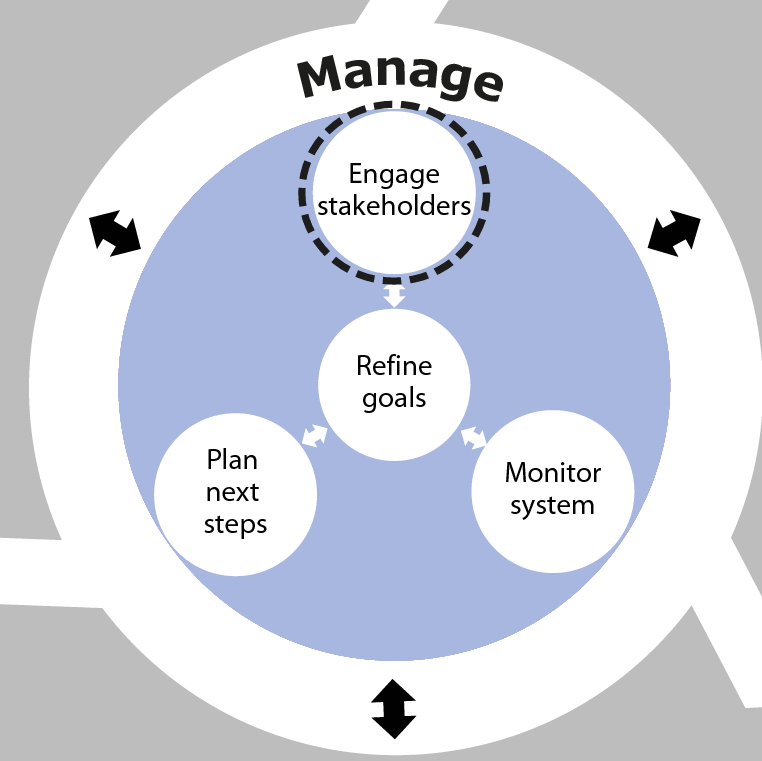This section looks at involving stakeholders throughout the SSA process. This is very important because stakeholders:
- can provide important information for understanding how the system works and what could go wrong and why;
- are affected by the current risks and it is important to give them some say in how these are addressed;
- can provide helpful suggestions on how to address the risks;
- may be affected by the changes that will be made;
- may be able to help implement the changes and to sustain them in the future.
This activity is related to the Identify stakeholders activity in the Examine phase as both activities are concerned with stakeholders.
However, rather than focusing on identifying stakeholders, the current activity focuses on keeping these stakeholders engaged throughout the whole SSA process. These two activities are linked. For example, an SSA may start with an idea of who the stakeholders are. They may then be invited to an initial meeting where, through the Identify stakeholders activity, further stakeholders may be identified, who need to be involved in later work.
A key strategy for encouraging continual involvement of stakeholders is to invite them to the SSA meetings, where they can be directly involved in the discussions and provide immediate input. In particular, their input is essential to make sure that the system description is accurate. Stakeholders can explain how things actually work in practice, rather than in theory, and how issues are currently tackled. They provide crucial insight into the risks in a systems and how these can best be addressed.
When organising such meetings, it is important to give careful thought to who and how many people to invite, and how well they might work together as a group. A group size of around three to eight people tends to work well, as it allows a number of different perspectives to be represented, while remaining small enough to manage well.
When setting such meetings up, remember that some professional groups will require significant advance notice, for example, six weeks for a senior consultant. Also bear in mind the possibility of them cancelling and the need to rearrange the meeting. Remember that input from different stakeholders may be most valuable at different points in the process and it might not be necessary to invite all of them to all of the meeting.


